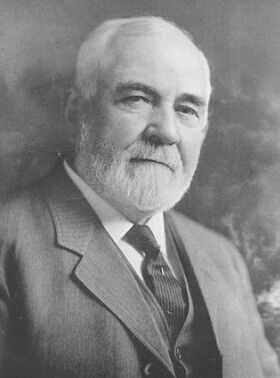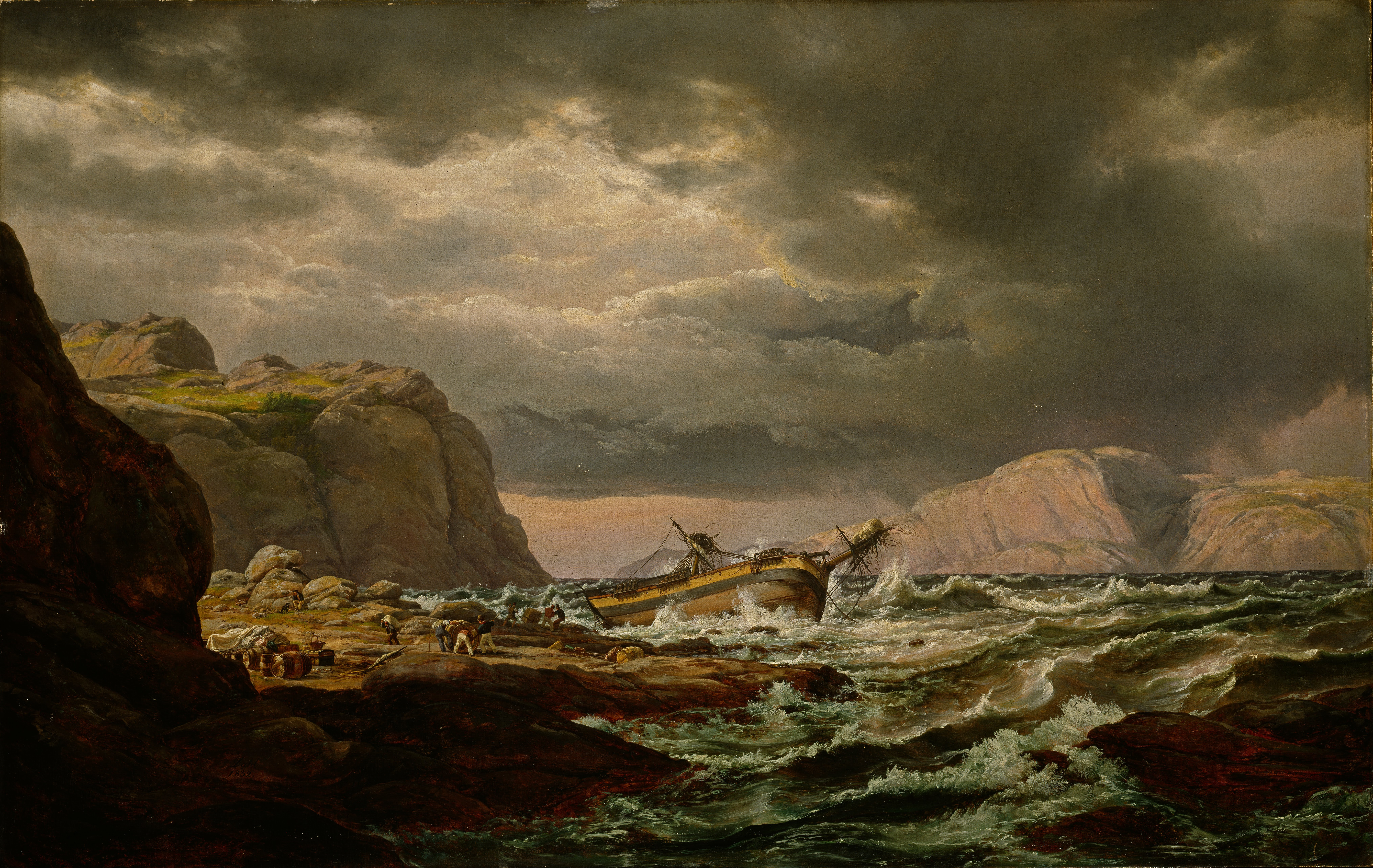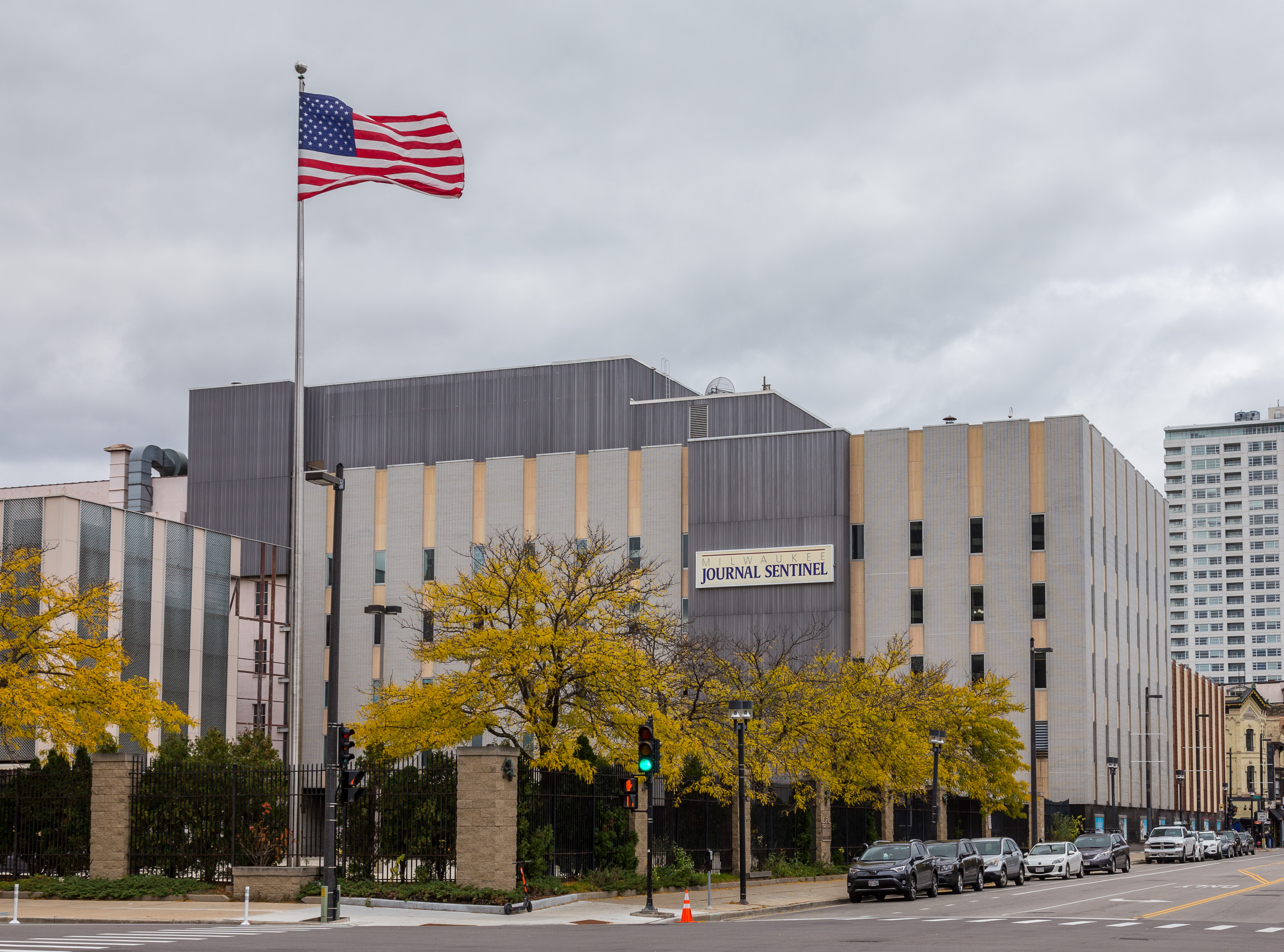|
Light Vessel No.57
''Light Vessel No.57'' (also known as ''Lightship No.57'' or ''LV57'') was an American lightvessel that was built in 1891 and served on the Great Lakes (Lake Michigan), west of the Straits of Mackinac (the reef is now the site of the Grays Reef Light), from her construction to her retirement in 1924. She was partly dismantled, used as a clubhouse, and wrecked by a storm at some time after 1928. On December 16, 1996 the remains of ''Light Vessel No.57'' were listed on the National Register of Historic Places. History ''Light Vessel No.57'' was built in 1891 in Toledo, Ohio by Craig Shipbuilding at a cost of $14,225. She was one of three federal lightvessels designed for use during the navigational season as an experiment to avoid the construction of a much more expensive permanent lighthouse. Her wooden hull was long, and was built of white oak planks that were fastened together with iron spikes. Her beam was wide, and her draft was deep. She also had a gross register tonnage ... [...More Info...] [...Related Items...] OR: [Wikipedia] [Google] [Baidu] |
Craig Shipbuilding
'' Light Vessel No.57'' at Toledo, Ohio Craig Shipbuilding was a shipbuilding company in Long Beach, California. To support the World War I demand for ships Craig Shipbuilding shipyard switched over to military construction and built: US Navy Submarines and Cargo Ships. Craig Shipbuilding was started in 1906 by John F. Craig. John F. Craig had worked in Toledo, Ohio with his father, John Craig (1838-1934), and Blythe Craig, both shipbuilders, their first ship was built in 1864 at Craig Shipbuilding Toledo. John F. Craig opened his shipbuilding company in Port of Long Beach on the south side of Channel 3, the current location of Pier 41 in the inner harbor, becoming the port's first shipyard. In 1907 Craig Shipbuilding is given a contract to dredge a channel from the Pacific ocean to the inner harbor. In 1917 Craig sold the shipyard to the California Shipbuilding Company. But then opened a new shipyard next to the one he just sold and called it the Long Beach Shipbuilding C ... [...More Info...] [...Related Items...] OR: [Wikipedia] [Google] [Baidu] |
Shipwrecks Of The Wisconsin Coast
A shipwreck is the wreckage of a ship that is located either beached on land or sunken to the bottom of a body of water. Shipwrecking may be intentional or unintentional. Angela Croome reported in January 1999 that there were approximately three million shipwrecks worldwide (an estimate rapidly endorsed by UNESCO and other organizations). When a ship's crew has died or abandoned the ship, and the ship has remained adrift but unsunk, they are instead referred to as ghost ships. Types Historic wrecks are attractive to maritime archaeologists because they preserve historical information: for example, studying the wreck of revealed information about seafaring, warfare, and life in the 16th century. Military wrecks, caused by a skirmish at sea, are studied to find details about the historic event; they reveal much about the battle that occurred. Discoveries of treasure ships, often from the period of European colonisation, which sank in remote locations leaving few livin ... [...More Info...] [...Related Items...] OR: [Wikipedia] [Google] [Baidu] |
National Register Of Historic Places In Milwaukee County, Wisconsin
This list comprises buildings, sites, structures, districts, and objects in Milwaukee County, which are listed on the National Register of Historic Places. There are 283 NRHP sites listed in Milwaukee County, including 211 in the City of Milwaukee included in the National Register of Historic Places listings in Milwaukee, Wisconsin and 72 outside of the city, listed below. Eight previously listed sites (outside of Milwaukee) have been removed. Current listings Former listings See also *National Register of Historic Places listings in Milwaukee, Wisconsin *List of National Historic Landmarks in Wisconsin *National Register of Historic Places listings in Wisconsin *Listings in neighboring counties: Ozaukee, Racine, Washington, Waukesha References {{Milwaukee Milwaukee Milwaukee ( ), officially the City of Milwaukee, is both the most populous and most densely populated city i ... [...More Info...] [...Related Items...] OR: [Wikipedia] [Google] [Baidu] |
Shipwrecks Of Lake Michigan
A shipwreck is the wreckage of a ship that is located either beached on land or sunken to the bottom of a body of water. Shipwrecking may be intentional or unintentional. Angela Croome reported in January 1999 that there were approximately three million shipwrecks worldwide (an estimate rapidly endorsed by UNESCO and other organizations). When a ship's crew has died or abandoned the ship, and the ship has remained adrift but unsunk, they are instead referred to as ghost ships. Types Historic wrecks are attractive to maritime archaeologists because they preserve historical information: for example, studying the wreck of revealed information about seafaring, warfare, and life in the 16th century. Military wrecks, caused by a skirmish at sea, are studied to find details about the historic event; they reveal much about the battle that occurred. Discoveries of treasure ships, often from the period of European colonisation, which sank in remote locations leaving few livin ... [...More Info...] [...Related Items...] OR: [Wikipedia] [Google] [Baidu] |
Steamships Of The United States
A steamship, often referred to as a steamer, is a type of steam-powered vessel, typically ocean-faring and seaworthy, that is propelled by one or more steam engines that typically move (turn) propellers or paddlewheels. The first steamships came into practical usage during the early 1800s; however, there were exceptions that came before. Steamships usually use the prefix designations of "PS" for ''paddle steamer'' or "SS" for ''screw steamer'' (using a propeller or screw). As paddle steamers became less common, "SS" is assumed by many to stand for "steamship". Ships powered by internal combustion engines use a prefix such as "MV" for ''motor vessel'', so it is not correct to use "SS" for most modern vessels. As steamships were less dependent on wind patterns, new trade routes opened up. The steamship has been described as a "major driver of the first wave of trade globalization (1870–1913)" and contributor to "an increase in international trade that was unprecedented in human ... [...More Info...] [...Related Items...] OR: [Wikipedia] [Google] [Baidu] |
Shipwrecks On The National Register Of Historic Places In Wisconsin
A shipwreck is the wreckage of a ship that is located either beached on land or sunken to the bottom of a body of water. Shipwrecking may be intentional or unintentional. Angela Croome reported in January 1999 that there were approximately three million shipwrecks worldwide (an estimate rapidly endorsed by UNESCO and other organizations). When a ship's crew has died or abandoned the ship, and the ship has remained adrift but unsunk, they are instead referred to as ghost ships. Types Historic wrecks are attractive to maritime archaeologists because they preserve historical information: for example, studying the wreck of revealed information about seafaring, warfare, and life in the 16th century. Military wrecks, caused by a skirmish at sea, are studied to find details about the historic event; they reveal much about the battle that occurred. Discoveries of treasure ships, often from the period of European colonisation, which sank in remote locations leaving few livin ... [...More Info...] [...Related Items...] OR: [Wikipedia] [Google] [Baidu] |
1891 Ships
Events January–March * January 1 ** Paying of old age pensions begins in Germany. ** A strike of 500 Hungarian steel workers occurs; 3,000 men are out of work as a consequence. **Germany takes formal possession of its new African territories. * January 2 – A. L. Drummond of New York is appointed Chief of the Treasury Secret Service. * January 4 – The Earl of Zetland issues a declaration regarding the famine in the western counties of Ireland. * January 5 **The Australian shearers' strike, that leads indirectly to the foundation of the Australian Labor Party, begins. **A fight between the United States and Indians breaks out near Pine Ridge agency. **Henry B. Brown, of Michigan, is sworn in as an Associate Justice of the Supreme Court. **A fight between railway strikers and police breaks out at Motherwell, Scotland. * January 6 – Encounters continue, between strikers and the authorities at Glasgow. * January 7 ** General Miles' forces su ... [...More Info...] [...Related Items...] OR: [Wikipedia] [Google] [Baidu] |
Milwaukee Journal Sentinel
The ''Milwaukee Journal Sentinel'' is a daily morning broadsheet printed in Milwaukee, Wisconsin, where it is the primary newspaper. It is also the largest newspaper in the state of Wisconsin, where it is widely distributed. It is currently owned by the Gannett Company.Gannett Completes Acquisition of Journal Media Group . ''USA Today'', April 11, 2016. In early 2003, the ''Milwaukee Journal Sentinel'' began printing operations at a new printing facility in West Milwaukee. In September 2006, the ''Journal Sentinel'' announced it had "signed a five-year agreement to print the national edition of '' |
Lake Michigan
Lake Michigan is one of the five Great Lakes of North America. It is the second-largest of the Great Lakes by volume () and the third-largest by surface area (), after Lake Superior and Lake Huron. To the east, its basin is conjoined with that of Lake Huron through the wide, deep, Straits of Mackinac, giving it the same surface elevation as its easterly counterpart; the two are technically a single lake. Lake Michigan is the world's largest lake by area in one country. Located in the United States, it is shared, from west to east, by the states of Wisconsin, Illinois, Indiana, and Michigan. Ports along its shores include Milwaukee and the City of Green Bay in Wisconsin; Chicago in Illinois; Gary in Indiana; and Muskegon in Michigan. Green Bay is a large bay in its northwest, and Grand Traverse Bay is in the northeast. The word "Michigan" is believed to come from the Ojibwe word (''michi-gami'' or ''mishigami'') meaning "great water". History Some of most studied ea ... [...More Info...] [...Related Items...] OR: [Wikipedia] [Google] [Baidu] |
Mackinac Bridge
The Mackinac Bridge ( ) is a suspension bridge spanning the Straits of Mackinac, connecting the Upper and Lower peninsulas of the U.S. state of Michigan. Opened in 1957, the bridge (familiarly known as "Big Mac" and "Mighty Mac") is the world's 27th-longest main span and the longest suspension bridge between anchorages in the Western Hemisphere. The Mackinac Bridge is part of Interstate 75 (I-75) and the Lake Michigan and Huron components of the Great Lakes Circle Tour across the straits; it is also a segment of the U.S. North Country National Scenic Trail. The bridge connects the city of St. Ignace on the north end with the village of Mackinaw City on the south. Envisioned since the 1880s, the bridge was designed by the engineer David B. Steinman and completed in 1957 only after many decades of struggles to begin construction. Length The bridge opened on November 1, 1957, connecting two peninsulas linked for decades by ferries. At the time, the bridge was formally d ... [...More Info...] [...Related Items...] OR: [Wikipedia] [Google] [Baidu] |
Mast (sailing)
The mast of a sailing vessel is a tall spar, or arrangement of spars, erected more or less vertically on the centre-line of a ship or boat. Its purposes include carrying sails, spars, and derricks, and giving necessary height to a navigation light, look-out position, signal yard, control position, radio aerial or signal lamp. Large ships have several masts, with the size and configuration depending on the style of ship. Nearly all sailing masts are guyed. Until the mid-19th century, all vessels' masts were made of wood formed from a single or several pieces of timber which typically consisted of the trunk of a conifer tree. From the 16th century, vessels were often built of a size requiring masts taller and thicker than could be made from single tree trunks. On these larger vessels, to achieve the required height, the masts were built from up to four sections (also called masts). From lowest to highest, these were called: lower, top, topgallant, and royal masts. Giving the ... [...More Info...] [...Related Items...] OR: [Wikipedia] [Google] [Baidu] |








.jpg)